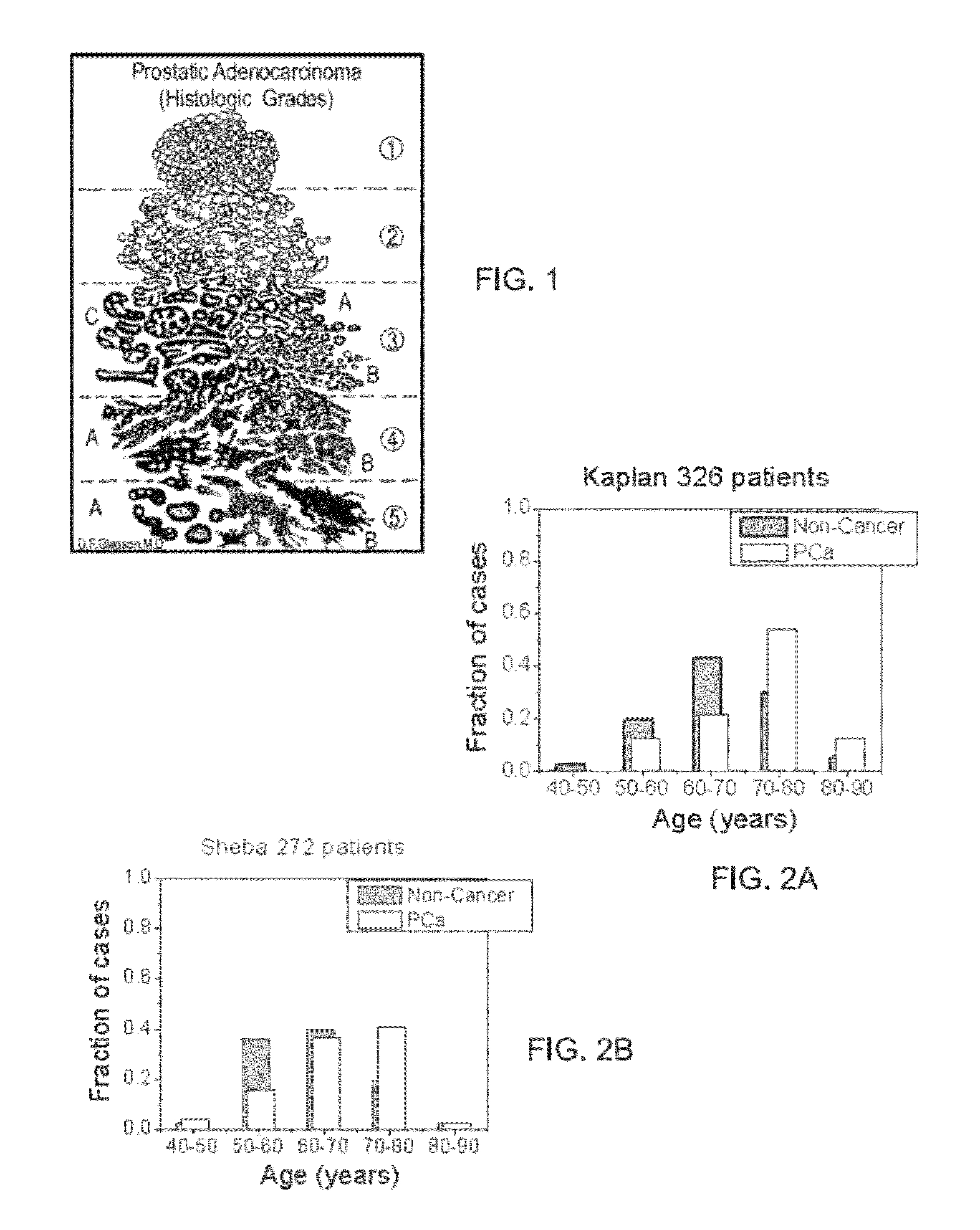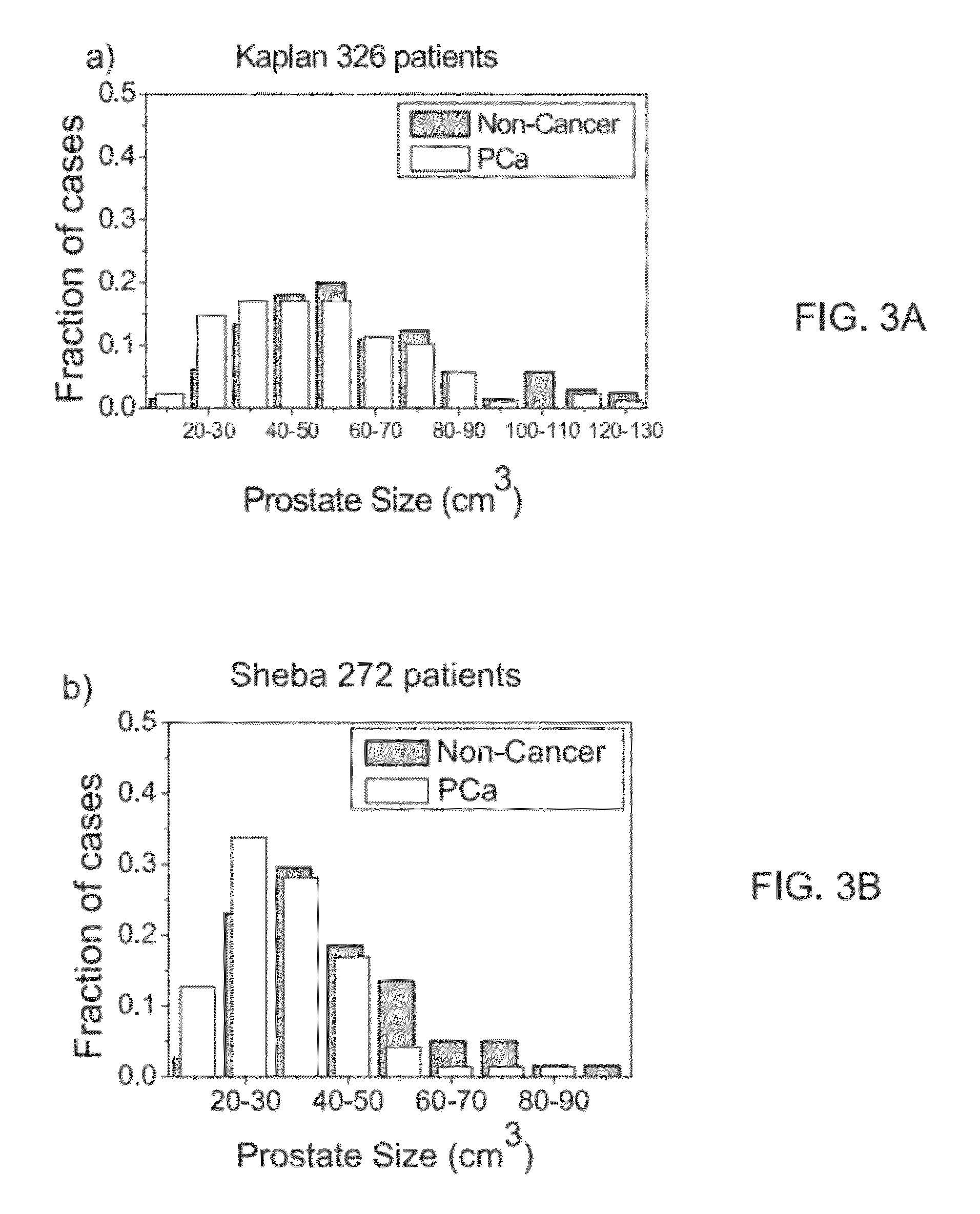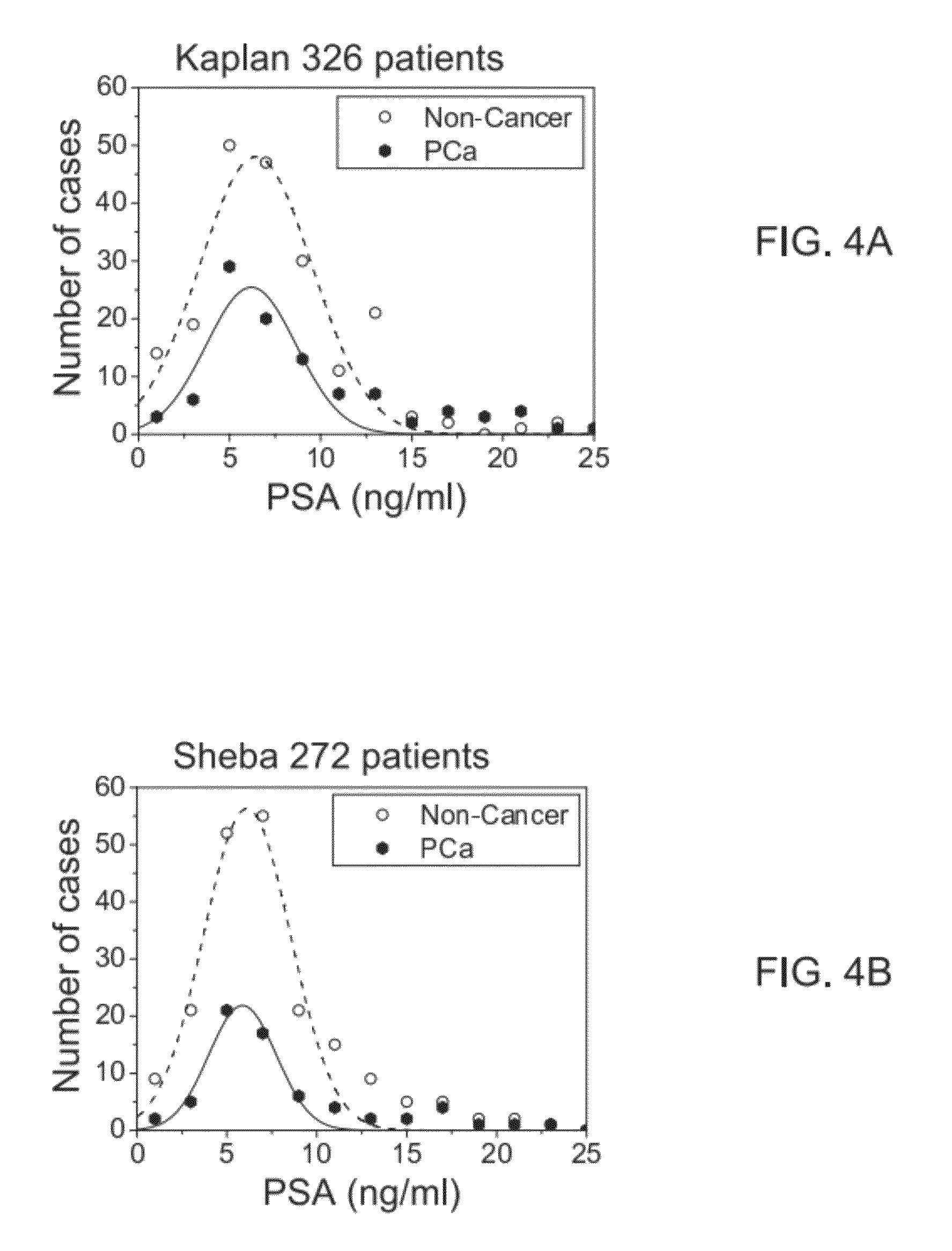Method of guiding prostate biopsy location
a biopsy location and biopsy core technology, applied in the field of biopsy core analysis, can solve the problems of high over-prescription of this highly invasive and costly examination, no above-mentioned screening method provides information on tumor differentiation, location and/or dimensions, and high false-negative rate of trnb
- Summary
- Abstract
- Description
- Claims
- Application Information
AI Technical Summary
Benefits of technology
Problems solved by technology
Method used
Image
Examples
example 1
Zinc Depletion, Gleason Scores and Lesion Size
[0212]X-Ray Fluorescence Measurements:
[0213]The methods and sample-handling protocols used in this study were described in details in PCT WO 2004 / 041060 to Breskin et al, filed Nov. 6, 2003, including details on calibration procedures and ways used to avoid sample drying during the measurements. Briefly, zinc concentration in the examined tissue-segments was quantified by X-ray fluorescence (XRF). Under the measuring conditions the sensitivity of both is about 20 counts per ppm, namely zinc concentration sensitivity better than 1 ppm. The calibration of both systems was checked against identical calibration standards, with absolute precision of a few μg / g (˜1%). The reliability was checked by repeated measurements of the same sample, during the entire study, assessed to be within sigma=5%.
[0214]The measurements were carried out, in parallel, in two locations, using two tabletop XRF systems: one a locally-assembled system at the Kaplan Me...
example ii
Zinc Concentration Maps
[0252]In addition to detection and grading of cancerous and pre-cancerous foci, it would be highly desirable to have tools for accurate and non-invasive location and imaging of prostate lesions, in order to detect both location, dimension and grade of lesions. In order to test whether zinc depletion data generated in accordance with some embodiments of the instant invention, can be useful in location and imaging of prostate lesions, zinc-concentration maps were generated from experimental zinc-concentration data. The maps represent prostate-tissue with lesions of different dimensions and histological grades, at various locations within the gland. The maps are then transformed into 8-bit images and processed with a simple image processing algorithm yielding a one-parameter classifier test.
[0253]Generation of Zinc Concentration Maps
[0254]FIG. 16 shows a representative frequency distribution of zinc-concentration for PCa tissue, based on the data presented in FIG...
PUM
| Property | Measurement | Unit |
|---|---|---|
| thickness | aaaaa | aaaaa |
| length | aaaaa | aaaaa |
| threshold L1 | aaaaa | aaaaa |
Abstract
Description
Claims
Application Information
 Login to View More
Login to View More - R&D
- Intellectual Property
- Life Sciences
- Materials
- Tech Scout
- Unparalleled Data Quality
- Higher Quality Content
- 60% Fewer Hallucinations
Browse by: Latest US Patents, China's latest patents, Technical Efficacy Thesaurus, Application Domain, Technology Topic, Popular Technical Reports.
© 2025 PatSnap. All rights reserved.Legal|Privacy policy|Modern Slavery Act Transparency Statement|Sitemap|About US| Contact US: help@patsnap.com



